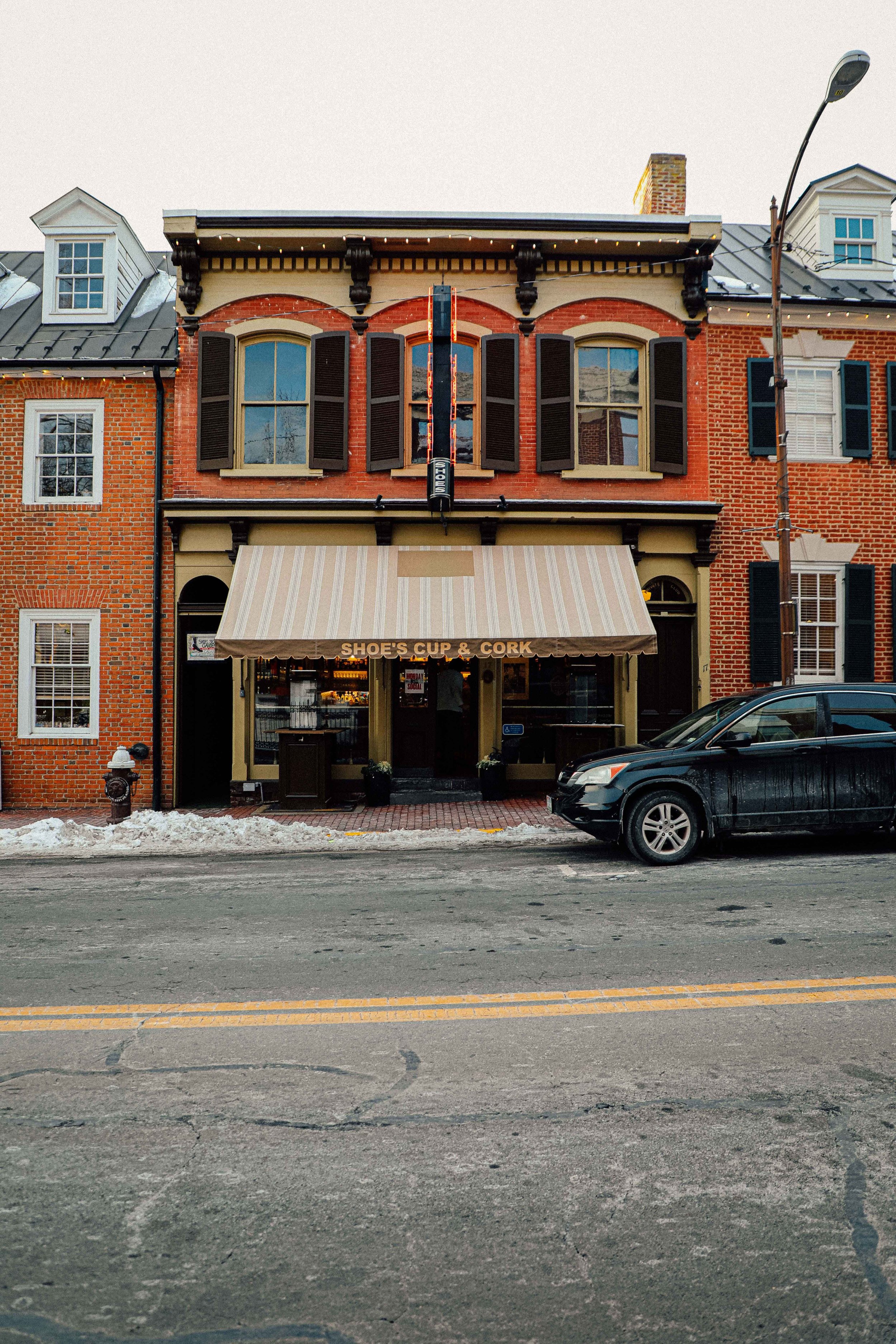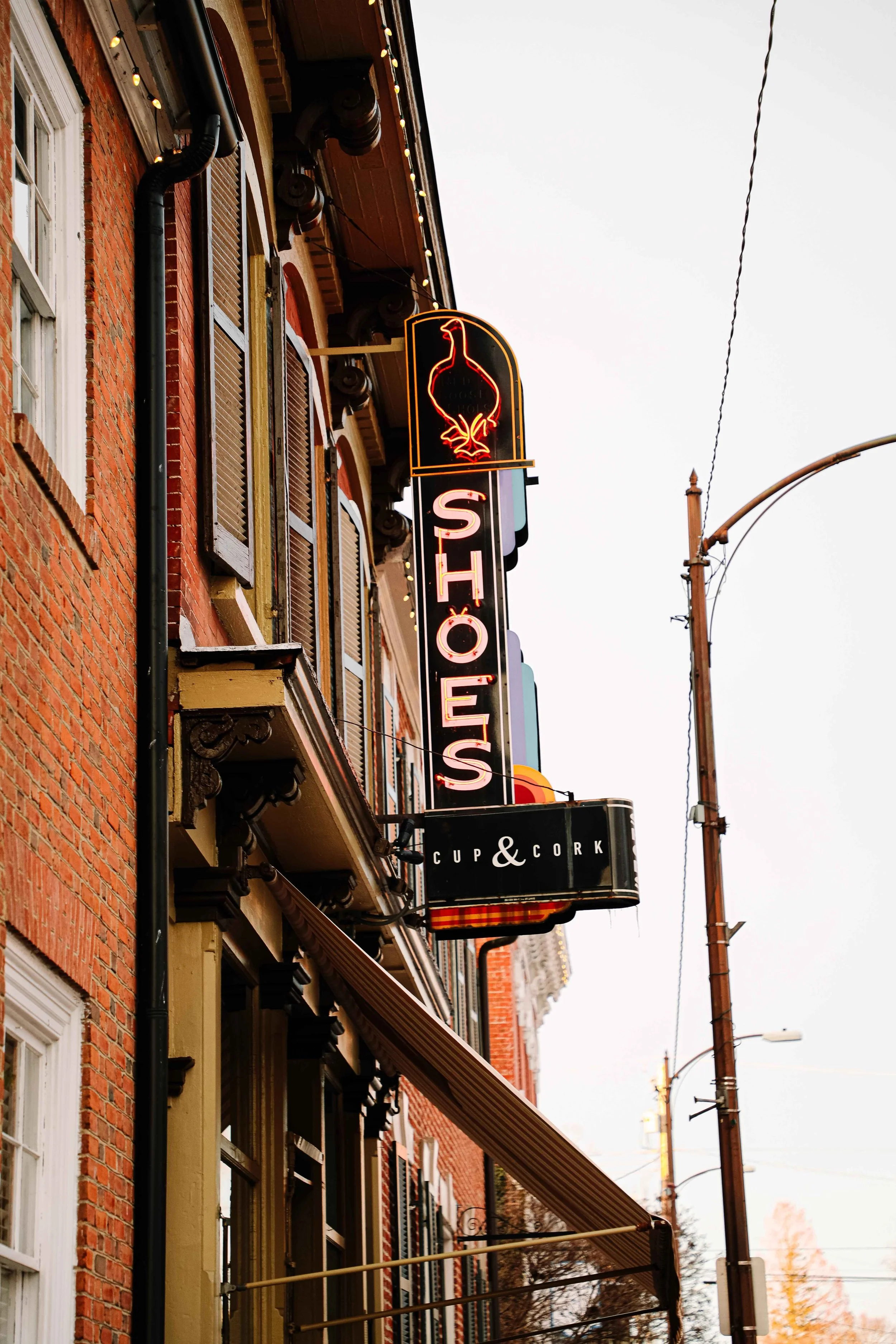
Our History
As best as we can tell, this building was constructed around 1880 and included what is now the Café and the Poker Room. Until the early 1920s, the building was used as the Leesburg Post Office, the town’s first telephone office, and even as a new car showroom. The large windows at the front were designed to open to allow cars in and out of the building.
During the conversion from a shoe repair shop to a restaurant, we tried to preserve and repurpose materials and other items that had been left behind. Wood from the old shelving was used to make new shelving; marble from the old shoeshine stand was reworked to provide countertops and the brass foot rests from the stand were relocated to the front window.
During construction, we noticed the heel of a shoe sticking out from the rubble of a wall, with a tag that had a due date of December 31, 1928, and a repair fee of $1.00 for a new heel that seems to have been completed. When the rightful owner shows up with the claim tag, the storage fee, and $1, we will gladly return it. Until then, it is the centerpiece of our Café chandelier.
In the early 1920s, Vincenzo Ranieri stopped off for lunch in Leesburg on his way from Sicily to Bluemont and decided to establish his American shoe repair and hat cleaning business here. The neon SHOES sign was installed in the 1940s as a promotion for Red Goose Shoes. Instead of changing the historic sign, we named the restaurant Shoe’s. The photo on the drop-down shade in front of the counter is of Vincenzo sometime in the late 1940s.
In 1973, Armenian-American Hartoun (“Arthur”) Varouganian, purchased the business and renamed it “Arthur’s Shoe Repair.” Vincenzo’s daughter, however, continued to live in the second-floor apartment for many years after the business changed hands. In 2005, Arthur’s closed and the building sat vacant until Karen fell in love with it.
We added a number of antiques, particularly in the Poker Room, which features elements of the 1920s and 1930s, including a Philco “Radiobar,” which was created during prohibition to conceal the “bar” in the event the police showed up uninvited. The chandelier hung in the Chicago Athletic Association during the 1920s, where Al Capone famously spent his leisure time.
The Secret Garden, cabanas and bocce ball court were added to expand our experience even further, allowing guests of all ages and interests to enjoy a morning, a day, or an evening with us playing, dining, imbibing, and sharing this space that we love so much. We hope you enjoy it as much as we do!



